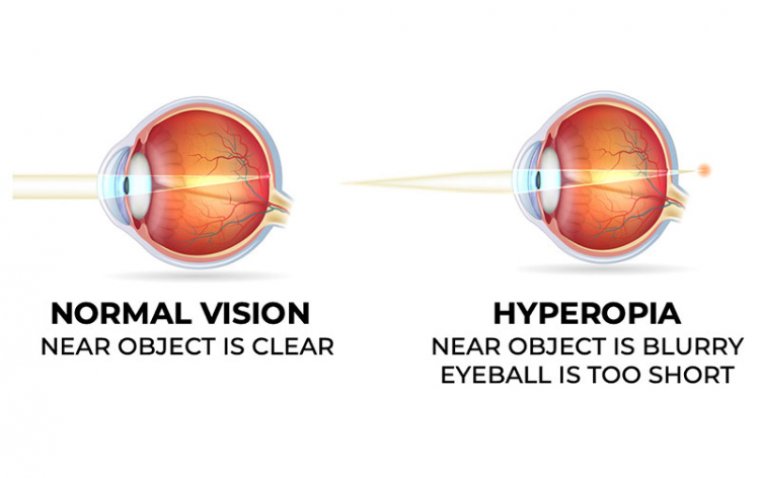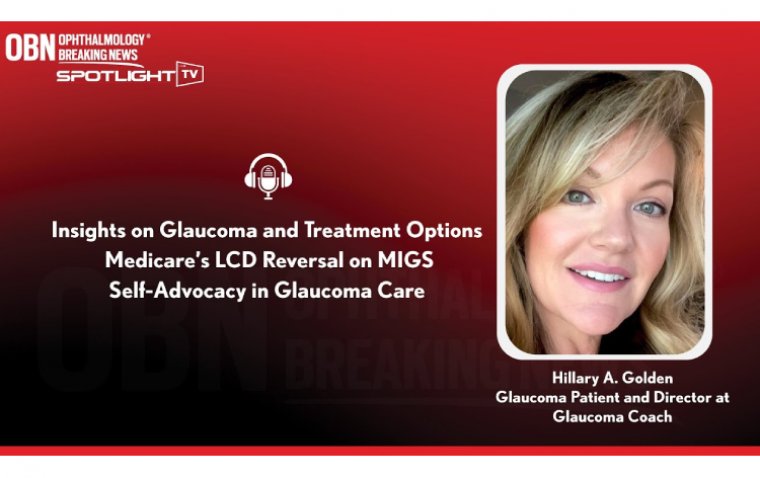
Goniosynechialysis: Surgery Insights for Glaucoma Management
What is Goniosynechialysis?
Goniosynechialysis, abbreviated as GSL, is a surgical procedure used in the management of angle-closure glaucoma. This procedure involves the careful separation of abnormal adhesions or synechiae that have formed between the iris and the trabecular meshwork, which is responsible for draining the aqueous humor from the eye. GSL aims to restore the normal function of the drainage angle and improve the outflow of fluid from the eye, thereby reducing intraocular pressure (IOP) and preserving vision.
Indications for Goniosynechialysis
GSL becomes necessary in several situations for managing glaucoma, particularly angle-closure glaucoma:
1. Acute Angle-Closure Glaucoma: GSL is often performed as an emergency procedure in cases of acute angle-closure glaucoma to rapidly relieve high IOP and alleviate symptoms like severe eye pain, blurred vision, and nausea.
2. Chronic Angle-Closure Glaucoma: In chronic cases where angle closure is persistent or recurrent, GSL may be recommended to prevent further optic nerve damage and preserve vision.
3. Combined with Cataract Surgery: GSL can also be performed alongside cataract surgery when there is evidence of angle closure. This combination helps address both conditions simultaneously.
Preparing for the Procedure
1. Consultation: Schedule a consultation with your ophthalmologist to discuss the need for GSL and to understand the procedure, its risks, and benefits. Be prepared to provide your medical history, including any allergies, medications, or previous eye surgeries.
2. Medication Review: Your eye doctor may adjust your glaucoma medications or prescribe additional medications to prepare your eye for the procedure. Follow their instructions meticulously.
3. Arrange Transportation: GSL is typically performed as an outpatient procedure. Arrange for someone to drive you home after the surgery, as your vision may be temporarily affected.
4. Follow Pre-Op Instructions: Adhere to any pre-operative instructions provided by your surgeon, such as avoiding contact lenses, eye makeup, or other products that may interfere with the surgery.
5. Ask Questions: Don't hesitate to ask your ophthalmologist any questions or express any concerns you may have about the procedure. Being well-informed can help alleviate anxiety and ensure a smooth GSL experience.
How is the Procedure Done & Techniques
Goniosynechialysis (GSL) is a surgical procedure performed to treat angle-closure glaucoma by separating adhesions or synechiae that have formed between the iris and the trabecular meshwork. Here's a brief overview of the GSL surgical process and techniques used:
Surgical Process:
1. Anesthesia: GSL is typically performed under local anesthesia to numb the eye and make the procedure painless. Some patients may also receive mild sedation to help them relax.
2. Microscope and Gonio Lens: The surgeon uses a surgical microscope and a gonio lens to visualize the anterior chamber of the eye, specifically the drainage angle formed by the cornea and iris.
3. Incision: A small incision is made in the cornea to access the anterior chamber.
4. Adhesion Separation: Using specialized microsurgical instruments, the surgeon carefully separates the adhesions between the iris and the trabecular meshwork. This meticulous separation allows the aqueous humor (the clear fluid inside the eye) to flow more freely through the trabecular meshwork.
5. Irrigation and Aspiration: To further improve aqueous outflow, the surgeon may use a balanced salt solution to irrigate the area and remove any cellular debris or pigment that may be obstructing the drainage system.
6. Closure: After the adhesions are separated, the incision is closed, and the eye may be patched or have a protective shield placed over it.
Techniques for Goniosynechialysis:
There are different techniques for GSL, including direct GSL and lens-assisted GSL. The choice of technique depends on the individual patient's condition and the surgeon's preference.
● Direct GSL: In this technique, the surgeon directly accesses and separates the adhesions using microsurgical instruments, such as forceps and viscoelastic agents.
● Lens-Assisted GSL: This technique involves using a special lens, such as a Swan-Jacobs or Sinskey hook, to push the iris away from the trabecular meshwork. The lens provides a clear view and facilitates safer adhesion separation.
Effectiveness
GSL is generally considered an effective procedure for managing angle-closure glaucoma. By restoring the normal function of the drainage angle, GSL can reduce intraocular pressure (IOP) and alleviate symptoms associated with high IOP. However, the long-term effectiveness of GSL may vary among individuals, and additional glaucoma management strategies, such as medication or laser therapy, may be needed to maintain optimal IOP control.
Benefits and Risks of Goniosynechialysis
Benefits of GSL
● IOP Reduction: One of the primary benefits of Goniosynechialysis is its ability to reduce intraocular pressure (IOP) in individuals with angle-closure glaucoma. By separating adhesions that obstruct the drainage angle, GSL allows the aqueous humor to flow more freely, leading to a decrease in IOP. Lowering IOP is crucial in managing glaucoma and preventing further optic nerve damage.
● Symptom Relief: GSL often provides rapid relief from symptoms associated with acute angle-closure glaucoma, such as severe eye pain, blurred vision, and nausea. This can significantly improve a patient's comfort and overall quality of life.
● Preservation of Vision: By addressing angle-closure glaucoma promptly, GSL can help preserve vision and prevent further vision loss. It is especially effective in cases where angle closure is acute or recurrent.
● Complementary Treatment: GSL can be used in conjunction with other glaucoma management strategies, such as medication or laser therapy. It complements these treatments by addressing the underlying mechanical obstruction of the drainage angle.
Risks and Complications of GSL
● Incomplete Synechiae Separation: In some cases, GSL may not fully separate all the adhesions between the iris and the trabecular meshwork. This can limit the effectiveness of the procedure and necessitate additional treatments.
● Recurrence: Adhesions may reform over time, leading to a recurrence of angle-closure glaucoma. Close monitoring and follow-up care are essential to detect and address any recurrence promptly.
● Infection and Inflammation: As with any surgical procedure, there is a risk of infection or post-operative inflammation. Patients are typically prescribed antibiotics and anti-inflammatory medications to mitigate these risks.
● IOP Fluctuations: In some cases, GSL may lead to temporary fluctuations in IOP, including a brief increase in pressure immediately after the procedure. This is usually managed with medications and resolves over time.
● Other Complications: Rare complications of GSL may include bleeding, damage to surrounding eye structures, or a transient rise in IOP that requires further intervention.
Postoperative Care for Goniosynechialysis
Following Goniosynechialysis (GSL), postoperative care is crucial to ensure a smooth recovery and optimize the effectiveness of the procedure. Here are some key insights into postoperative care for GSL:
1. Medications: Your ophthalmologist will likely prescribe eye drops or medications to prevent infection, reduce inflammation, and control intraocular pressure (IOP). It's essential to adhere to the prescribed medication regimen meticulously.
2. Eye Shield: You may be provided with an eye shield to protect the operated eye, especially during sleep or activities that could accidentally touch or bump the eye.
3. Avoiding Eye Rubbing: It's crucial to refrain from rubbing or putting pressure on the operated eye, as this can disrupt the healing process and increase the risk of complications.
4. Follow-Up Appointments: Attend all scheduled follow-up appointments with your ophthalmologist. These appointments allow your doctor to monitor your progress, assess IOP, and ensure that the GSL procedure has been successful.
5. Monitoring Symptoms: Be vigilant about any changes in your vision or the appearance of new symptoms. If you experience significant pain, worsening vision, or any unusual eye-related symptoms, contact your ophthalmologist promptly.
6. Gradual Resumption of Activities: Your ophthalmologist will provide guidance on when it's safe to resume normal activities, including work, exercise, and daily routines. It's essential to follow these recommendations to avoid strain on the operated eye.
7. Eye Protection: Use sunglasses to protect your eyes from bright sunlight and wind, especially during the early stages of recovery.
8. Hygiene: Maintain good eye hygiene by keeping the eye area clean and avoiding exposure to dusty or dirty environments.
How Is Recovery after Procedure?
Recovery Timeline
● Immediate Postoperative Period: In the immediate hours following GSL, you may experience some discomfort, blurred vision, and light sensitivity. These are typically temporary and can be managed with prescribed medications. You might also have a protective eye shield in place.
● First Few Days: During the first few days after GSL, it's important to rest and avoid strenuous activities. Your ophthalmologist will provide guidance on medication use, hygiene, and when to remove the eye shield. Attend any scheduled follow-up appointments to monitor your progress.
● First Few Weeks: As the weeks progress, you should notice improvements in your vision and a reduction in any symptoms associated with angle-closure glaucoma. Continue to follow your doctor's instructions regarding medication use and activities.
● Long-Term Recovery: The full benefits of GSL may become more apparent over the long term. GSL aims to lower intraocular pressure (IOP) and prevent further optic nerve damage. Regular follow-up appointments with your ophthalmologist are essential to monitor IOP and overall eye health. You may continue to use glaucoma medications as prescribed to maintain IOP control.
What Are the Potential Outcomes?
● IOP Reduction: GSL is generally effective in reducing intraocular pressure (IOP), which is crucial for managing angle-closure glaucoma. Lower IOP helps protect the optic nerve and preserve vision.
● Symptom Relief: Many patients experience significant relief from symptoms associated with angle-closure glaucoma, such as eye pain, blurred vision, and nausea, in the days and weeks following GSL.
● Preservation of Vision: GSL's primary goal is to prevent further optic nerve damage and preserve vision. It can be particularly beneficial in cases of acute or recurrent angle-closure glaucoma.
● Long-Term Management: GSL is often just one component of a long-term glaucoma management plan. Your ophthalmologist may recommend continued use of glaucoma medications or other treatments to maintain optimal IOP control.
Summary
Goniosynechialysis (GSL) is a valuable surgical procedure that offers hope and relief for individuals dealing with angle-closure glaucoma. It provides the potential for reducing intraocular pressure, alleviating symptoms, and preserving precious vision. The recovery process may vary, but with careful postoperative care and regular follow-up appointments, the benefits of GSL can become more evident over time.
However, each case of angle-closure glaucoma is unique, and treatment decisions should be made in consultation with an experienced ophthalmologist. Your eye health is too important to leave to chance, so we urge you to take action. If you or a loved one is affected by angle-closure glaucoma, seek personalized advice and consultation with an ophthalmologist. They can assess your specific condition, discuss the suitability of GSL or other treatments, and provide tailored guidance to ensure the best possible outcome for your eye health. Don't delay; take the first step towards preserving your vision by consulting with an eye care specialist today. Your eyes deserve the very best care and attention.
(1).jpg)










